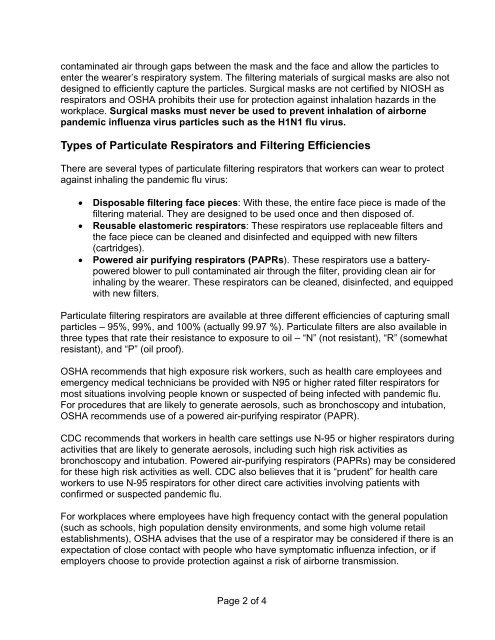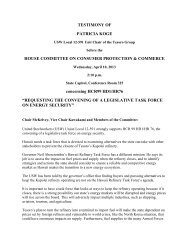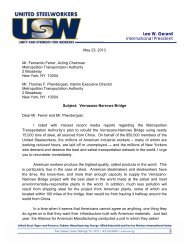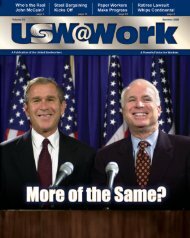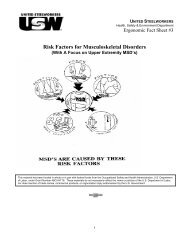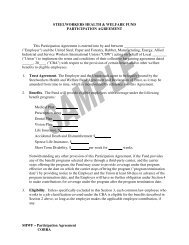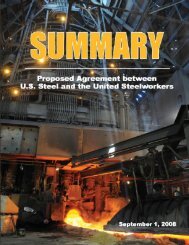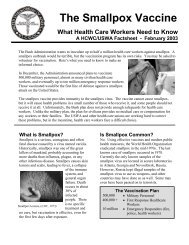Fact Sheet #3 - United Steelworkers
Fact Sheet #3 - United Steelworkers
Fact Sheet #3 - United Steelworkers
You also want an ePaper? Increase the reach of your titles
YUMPU automatically turns print PDFs into web optimized ePapers that Google loves.
contaminated air through gaps between the mask and the face and allow the particles toenter the wearer’s respiratory system. The filtering materials of surgical masks are also notdesigned to efficiently capture the particles. Surgical masks are not certified by NIOSH asrespirators and OSHA prohibits their use for protection against inhalation hazards in theworkplace. Surgical masks must never be used to prevent inhalation of airbornepandemic influenza virus particles such as the H1N1 flu virus.Types of Particulate Respirators and Filtering EfficienciesThere are several types of particulate filtering respirators that workers can wear to protectagainst inhaling the pandemic flu virus:• Disposable filtering face pieces: With these, the entire face piece is made of thefiltering material. They are designed to be used once and then disposed of.• Reusable elastomeric respirators: These respirators use replaceable filters andthe face piece can be cleaned and disinfected and equipped with new filters(cartridges).• Powered air purifying respirators (PAPRs). These respirators use a batterypoweredblower to pull contaminated air through the filter, providing clean air forinhaling by the wearer. These respirators can be cleaned, disinfected, and equippedwith new filters.Particulate filtering respirators are available at three different efficiencies of capturing smallparticles – 95%, 99%, and 100% (actually 99.97 %). Particulate filters are also available inthree types that rate their resistance to exposure to oil – “N” (not resistant), “R” (somewhatresistant), and “P” (oil proof).OSHA recommends that high exposure risk workers, such as health care employees andemergency medical technicians be provided with N95 or higher rated filter respirators formost situations involving people known or suspected of being infected with pandemic flu.For procedures that are likely to generate aerosols, such as bronchoscopy and intubation,OSHA recommends use of a powered air-purifying respirator (PAPR).CDC recommends that workers in health care settings use N-95 or higher respirators duringactivities that are likely to generate aerosols, including such high risk activities asbronchoscopy and intubation. Powered air-purifying respirators (PAPRs) may be consideredfor these high risk activities as well. CDC also believes that it is “prudent” for health careworkers to use N-95 respirators for other direct care activities involving patients withconfirmed or suspected pandemic flu.For workplaces where employees have high frequency contact with the general population(such as schools, high population density environments, and some high volume retailestablishments), OSHA advises that the use of a respirator may be considered if there is anexpectation of close contact with people who have symptomatic influenza infection, or ifemployers choose to provide protection against a risk of airborne transmission.Page 2 of 4


